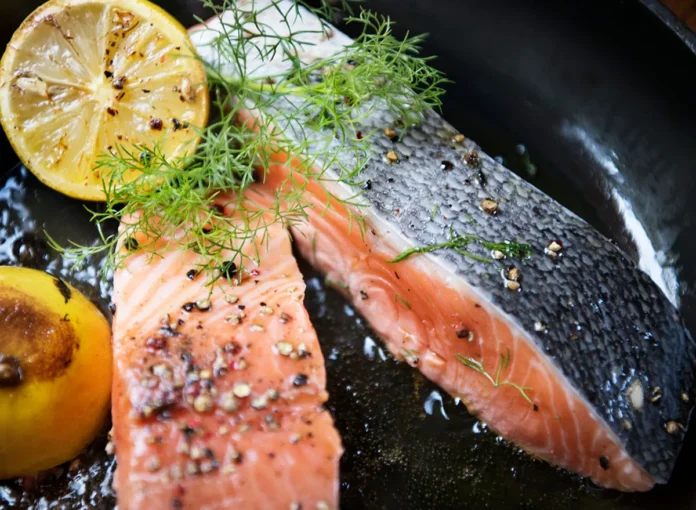Keeping the skin on your salmon fillet not only simplifies meal prep but also enhances its nutritional value. Eating salmon skin can boost your intake of essential nutrients, including omega-3 fatty acids, which are crucial for reducing inflammation and promoting brain and heart health.
Why You Should Eat Salmon Skin
Rich in Omega-3 Fatty Acids:
Registered dietitians emphasize that salmon skin is a powerhouse of omega-3 fatty acids. These healthy fats play a vital role in fighting inflammation, increasing good cholesterol (HDL), lowering blood pressure, and reducing the risk of cardiovascular disease. “Salmon skin is filled with omega-3s, which we don’t get enough of,” says Laura Feldman, a registered dietitian and program director at Long Island University’s Post campus.
Nutrient-Dense and Delicious:
In addition to omega-3s, salmon skin provides protein, collagen, vitamin D, B vitamins, and selenium. Collagen supports joint health and skin elasticity, while vitamin D strengthens bones. Selenium, a powerful antioxidant, helps protect cells from damage. Deborah Salvatore, a registered dietitian and director of graduate nutrition programs at Long Island University, notes that the benefits of these nutrients outweigh the slight increase in fat content from the skin.
Salmon Skin Safety and Environmental Considerations
While salmon skin offers impressive nutritional benefits, it’s important to be mindful of potential environmental contaminants such as PCBs, microplastics, and mercury. According to Jamie Mok, a registered dietitian and spokesperson for the Academy of Nutrition and Dietetics, levels of these contaminants vary depending on the salmon’s origin. To minimize exposure, it’s best to consume a variety of low-mercury fish options, including sardines, mackerel, anchovies, and herring. The U.S. Food and Drug Administration (FDA) classifies salmon in the lower mercury category, making it a safe choice for most consumers.
Incorporating Salmon Skin into Your Diet
Health experts recommend consuming at least eight ounces of fish per week as part of a heart-healthy diet. For an extra nutritional boost, consider these tips for enjoying salmon skin:
- Crisp It Up: Crisp the salmon skin in a hot pan and use it as a crunchy topping for salads, similar to croutons.
- Eat It with Your Fillet: Enjoy the salmon fillet with the skin on to maximize your intake of omega-3 fatty acids and other key nutrients.
- Mix It Up: Incorporate salmon skin into various recipes to benefit from its protein and collagen content, supporting both joint health and skin vitality.
Conclusion
Embracing salmon skin in your meals is a smart choice for those looking to enhance their diet with more omega-3 fatty acids, antioxidants, and essential nutrients. With its numerous health benefits—from boosting heart and brain health to supporting joint function and skin quality—salmon skin is a nutritious addition to any balanced diet. Remember to choose low-mercury fish options and enjoy the culinary and health advantages that salmon skin has to offer.




